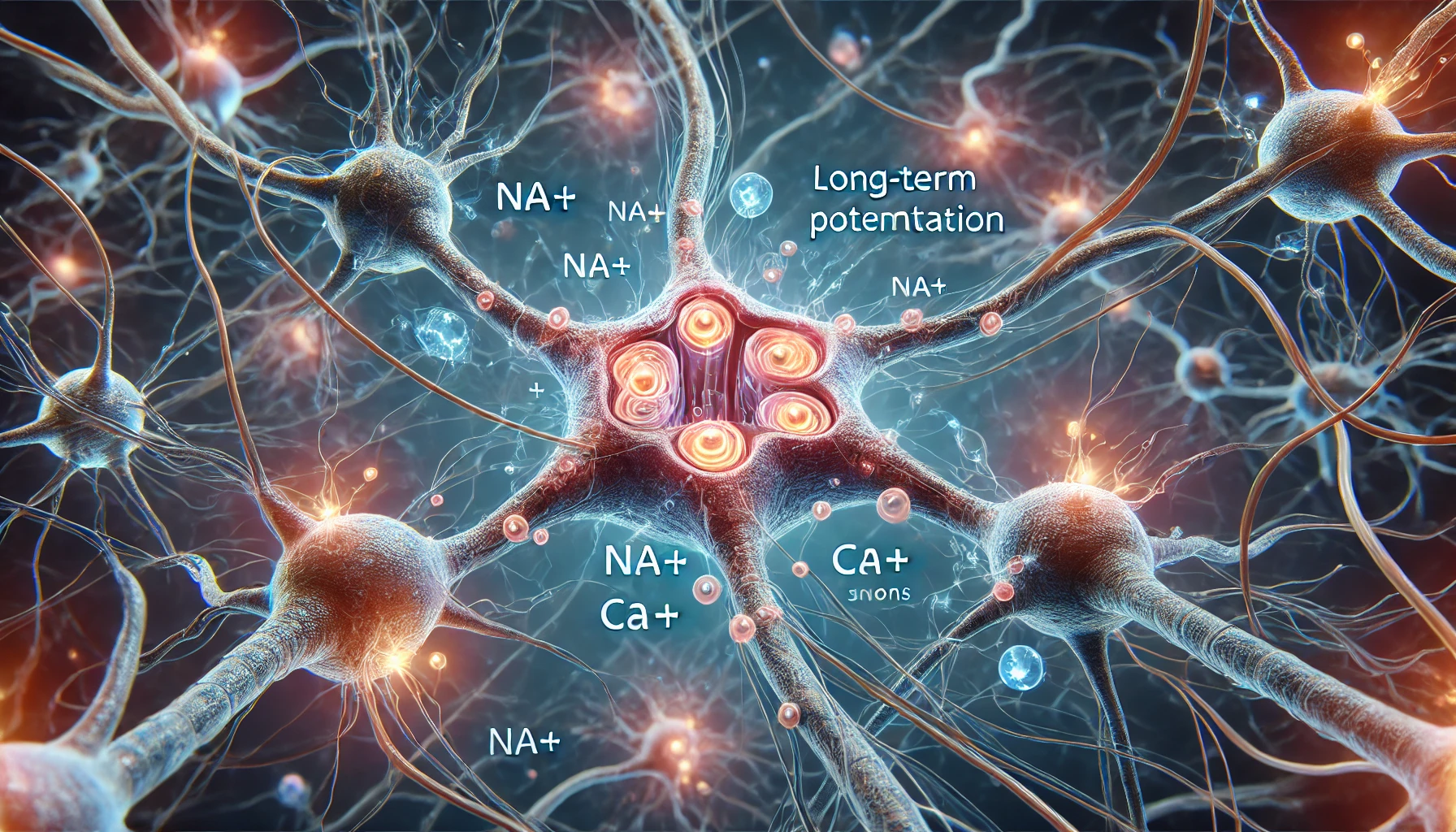Neuroscience describes memory formation as the long-term strengthening of synaptic connections. This is when the electrical and chemical signals between nerve cells become stronger and the synaptic connection is maintained for longer. Na⁺ and Ca²⁺ ions play an important role in this process, with early potentiation leading to short-term memories and late potentiation leading to long-term memories. Repetitive learning and emotional states also affect memory formation.
Many studies in neuroscience describe the formation of memories as “long-term potentiation”. According to this theory, nerve cells in the brain make synaptic connections that share information by transmitting electrical and chemical signals across synapses, the gaps between cells. When these signals are strong enough to keep the synaptic connection open for a long time, this is called long-term potentiation, and this is how memories are formed.
To better understand how memories are formed, we need to look at the basic structure and function of neurons. Neurons are generally composed of three main parts: The cell body, the axon, and the dendrites. The cell body contains the nucleus and most of the cell’s organelles, while the axon is responsible for transmitting electrical signals over long distances. Dendrites are responsible for receiving signals from other nerve cells. These structures work together to enable the transmission and processing of information.
Synaptic connections are based on the activity of ions in nerve cells. Ions move in and out of the neuronal membrane by diffusing from higher to lower concentrations and by migrating. This movement of ions changes the state of the neuron. First of all, in the absence of external stimuli, there are mainly more cations outside the cell membrane and more anions inside, resulting in polarization, which divides the inside and outside of the cell membrane into positive and negative charges, respectively. During this process, the neuron is in a stable state. However, when there is an external stimulus such as new information, the positively charged Na⁺ (sodium ions) diffuse from the outside to the inside, causing depolarization, which accumulates a positive charge inside the cell. Depolarization causes the nerve cell to become excited, forming an action potential, which is an electrical signal. When a nerve cell becomes excited, Ca²⁺ (calcium ions) from outside the cell diffuse inward. This Ca²⁺ then releases several neurotransmitters, including glutamate, which sends out chemical signals. These signals bind with other nerve cells and form synaptic connections. The cell that secretes the chemical signal is called the presynaptic cell, and the cell that receives the chemical signal is called the postsynaptic cell.

The long-term strengthening of these synaptic connections is due to the role of glutamic acid and Ca²⁺. Glutamate released by an excited presynaptic cell stimulates ampa receptors and NMDA receptors on the postsynaptic cell. First, the channels of the ampa receptors open up when stimulated by large amounts of glutamate. The diffusion of Na+ into these channels causes the postsynaptic cell to depolarize and become excited. This causes Mg²⁺ (magnesium ions) to be removed from the pathway of the NMDA receptor being stimulated by glutamate, opening the pathway. Na⁺ and Ca⁺ then enter the open NMDA receptor channel by diffusion. The influx of Ca²⁺ activates proteins in the cell, and the activated proteins create new ampa receptors. As a result, the postsynaptic cell receives more Na⁺, which enhances depolarization, and the influx of Ca²⁺ continues, allowing it to remain excited longer.
Excited postsynaptic cells also send signals back to presynaptic cells to increase the amount of glutamate they release, further strengthening the synaptic connection. This allows the synaptic connection to last up to three hours, which is called early long-term potentiation. In contrast, synaptic connections can last for more than 24 hours, which is called late potentiation. What makes late potentiation different from early potentiation is that it involves the synthesis of new proteins. Since ampa receptors are short-lived, new ampa receptors must be made to maintain synaptic connections, and this cannot be done by utilizing only the proteins in the cell as in early potentiation. Therefore, new proteins must be synthesized to continue making ampa receptors. Neuroscientists believe that short-term memory is formed through early long-term potentiation and long-term memory is formed through late long-term potentiation.
Interestingly, this process is not just biological, but also deeply connected to the psychological aspects of learning and memory. For example, repetitive learning and experiences strengthen synaptic connections, which makes certain information or skills more persistent and easier to recall. This explains why repetition and practice are important when we learn new information. Stress and emotional states can also affect synaptic strengthening, which plays a role in the formation and recall of memories. This integrative approach shows that neuroscience is more than just a biological study and is connected to many other fields, such as psychology and education.
